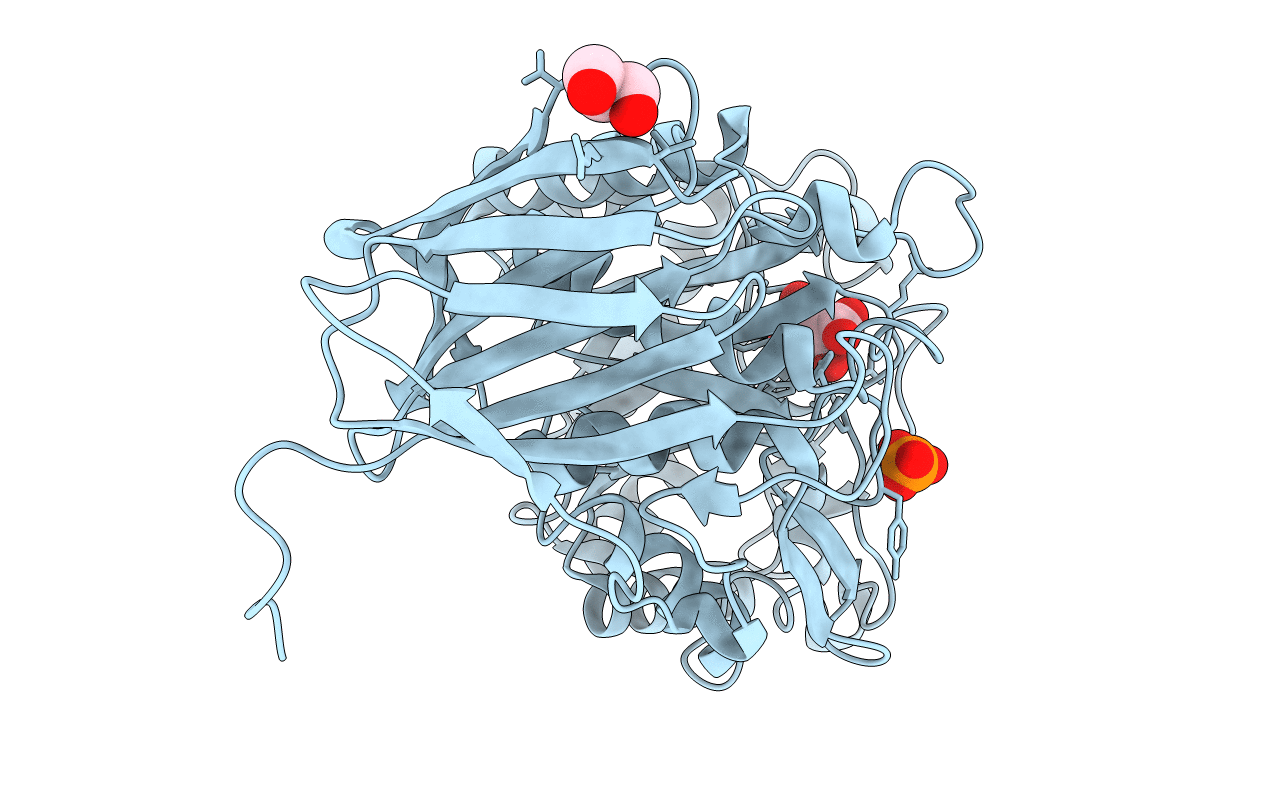
Deposition Date
2012-01-18
Release Date
2012-02-22
Last Version Date
2023-11-08
Entry Detail
PDB ID:
3VNZ
Keywords:
Title:
Crystal structure of beta-glucuronidase from Acidobacterium capsulatum in complex with D-glucuronic acid
Biological Source:
Source Organism:
Acidobacterium capsulatum (Taxon ID: 240015)
Host Organism:
Method Details:
Experimental Method:
Resolution:
1.80 Å
R-Value Free:
0.23
R-Value Work:
0.19
R-Value Observed:
0.20
Space Group:
I 41 2 2


